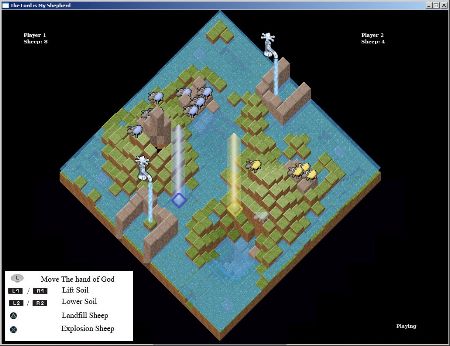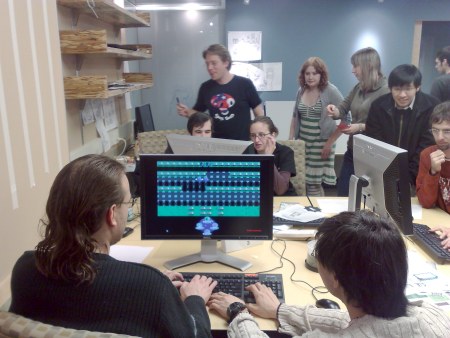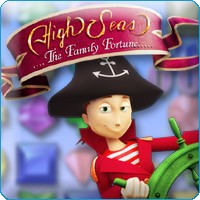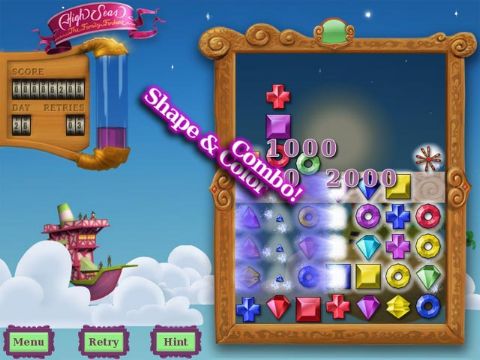This weekend saw the 2nd Nordic Game Jam held at the IT University in Copenhagen. In Danish, here is the press release and some pictures. With 80 participants, it seems to be the largest game jam in the world so far.
Since I wasn’t an organizer this year, I could focus on actually making a game. With the great team of Thomas Dougans, Rasmus Keldorff, Mike Sj?rslev Khamphoukeo, Tim Nielsen and myself, we created the two-player strategy game Baa-aah: The Lord is my Shepherd.
The core of the game is protecting your sheep from drowning in the rising water, while attacking your opponents’ sheep. To this end, you can terraform the land, building and breaking dams. Additionally, your sheep can be sacrificed to dramatically raise and lower a portion of the playing field. Here is a screenshot towards the end of a game:

Method-wise, we started by creating a level editor before making anything playable, and then we simply toyed around with making different levels, playing them, and refining the basic gameplay.
The game isn’t anywhere finished, but it’s actually playable and fairly fun, and I am quite proud that we did this in <48 hours.
Oh, and we were voted best game of the event by the participants ;)
(There’s a jury prize and an audience prize.)





